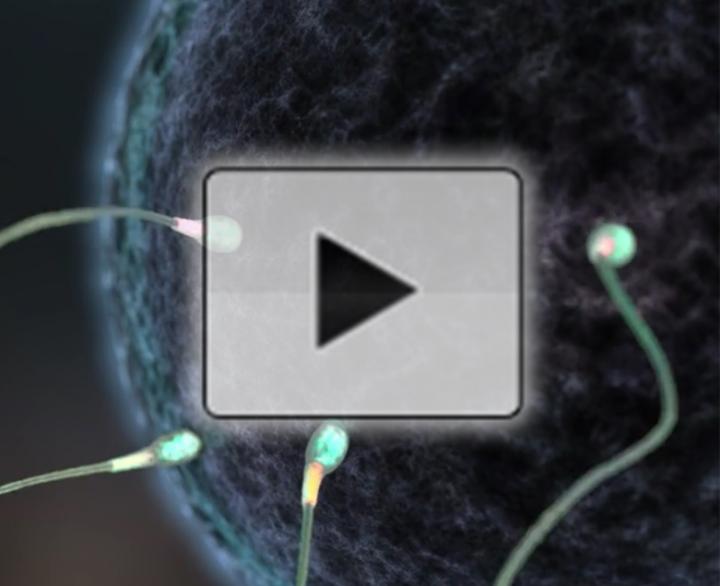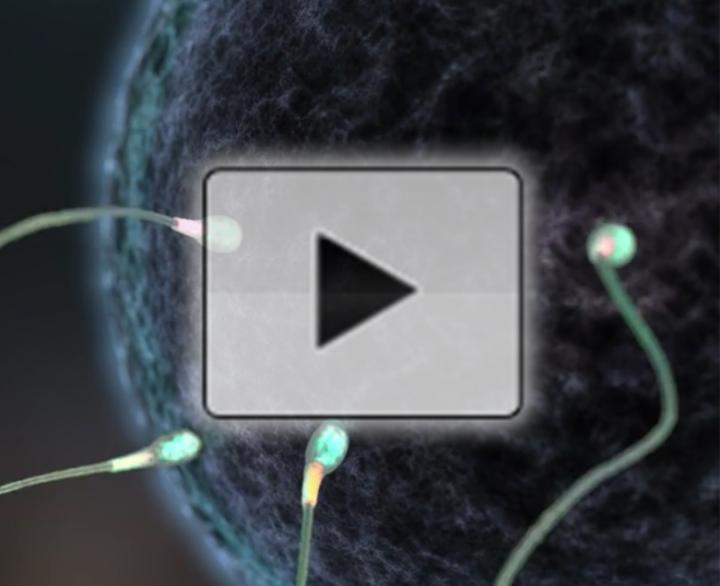
Credit: Wyss Institute, Harvard University
Science has long inspired the arts, but examples of the reverse scenario are sparse. Now scientists who set out to produce a "Star Wars" parody have inadvertently created such an example. Incorporating animation techniques from the film industry, the researchers developed a robust new modeling tool that could help spur new molecular discoveries. Their project, reported in ACS Nano, resulted in a short film about fertilization called "The Beginning." For a look behind-the-scenes, watch ACS' Headline Science video.
The film starts with a black screen. Dramatic music plays. Introductory words appear, then white stars dot the screen. Riffing off the original "Star Wars," a narrative scrolls away from you into space. Then the view zooms toward a blue sphere. Objects start flickering onscreen in the foreground, but instead of spacecraft hurtling toward a planet, it's sperm racing to be the first to fertilize the blue egg. Donald Ingber and Charles Reilly created the short film to broaden public interest in science. But in doing so, they unexpectedly developed a useful tool for modeling molecular behavior.
When making their movie, the scientists wanted to accurately simulate the frenetic movement of sperm tails, which propel the cells. So they combined physics-based animation software from the filmmaking industry with molecular dynamic simulation tools, and used real and simulated data from scientific reports to model the inner workings of sperm tails down to the atomic scale. The results yielded new insights into how molecular "legs," or protein motors, move. Also, simulating changes to sperm head size, shape and other variables could lead to a better understanding of defects that affect infertility, the researchers explain. Even more broadly, they say the exercise allowed them to tackle a fundamental challenge in science: modeling hierarchical cellular and molecular motions across various scales.
###
The authors acknowledge funding from the Wyss Institute for Biologically Inspired Engineering at Harvard University.
The abstract that accompanies this study is available here.
The American Chemical Society, the world's largest scientific society, is a not-for-profit organization chartered by the U.S. Congress. ACS is a global leader in providing access to chemistry-related information and research through its multiple databases, peer-reviewed journals and scientific conferences. ACS does not conduct research, but publishes and pulbicizes peer-reviewed scientific studies. Its main offices are in Washington, D.C., and Columbus, Ohio.
To automatically receive news releases from the American Chemical Society, contact [email protected].
Follow us on Twitter | Facebook
Media Contact
Katie Cottingham
[email protected]
301-775-8455
@ACSpressroom
http://www.acs.org





